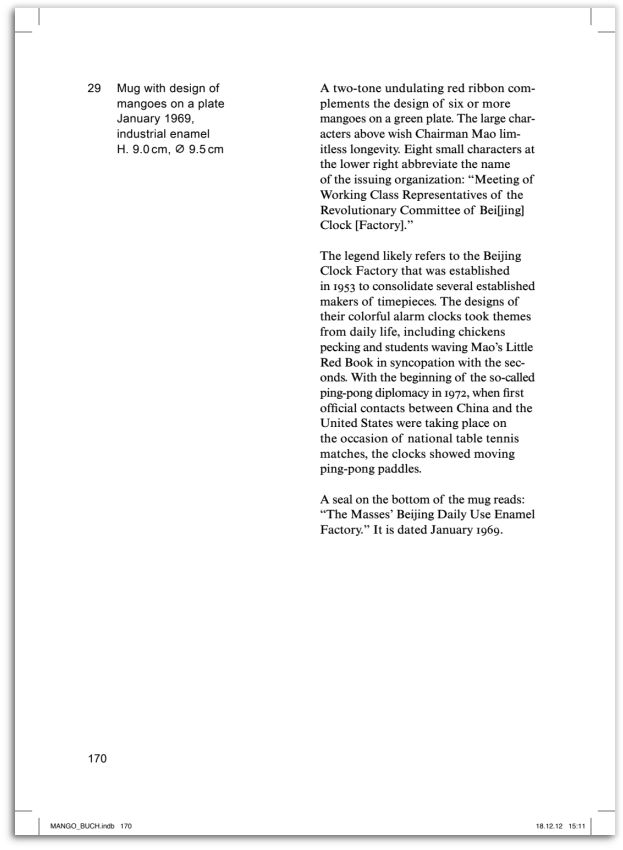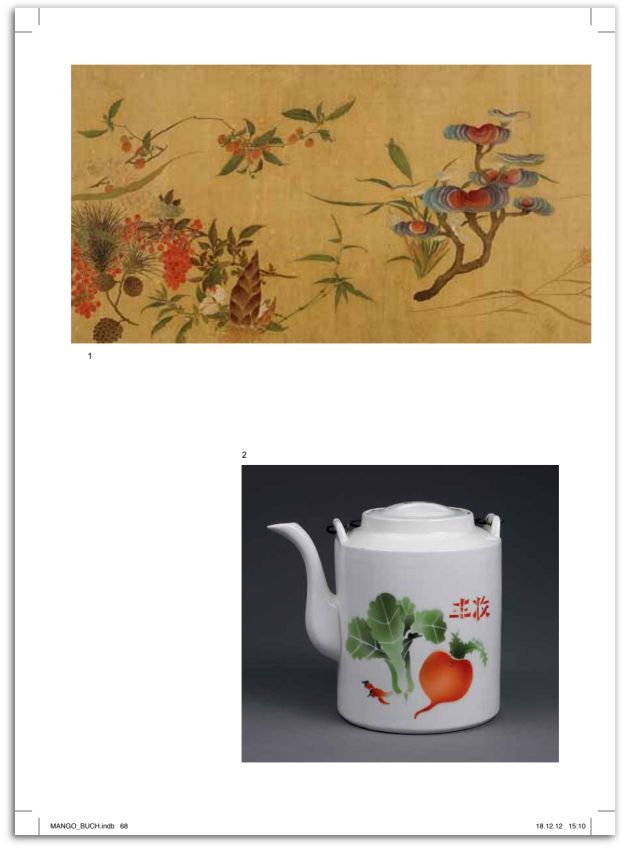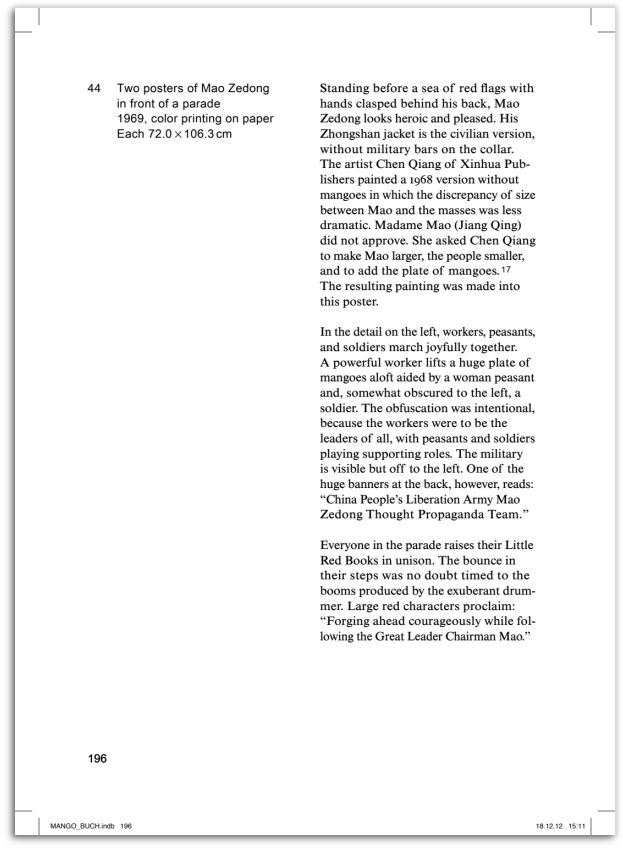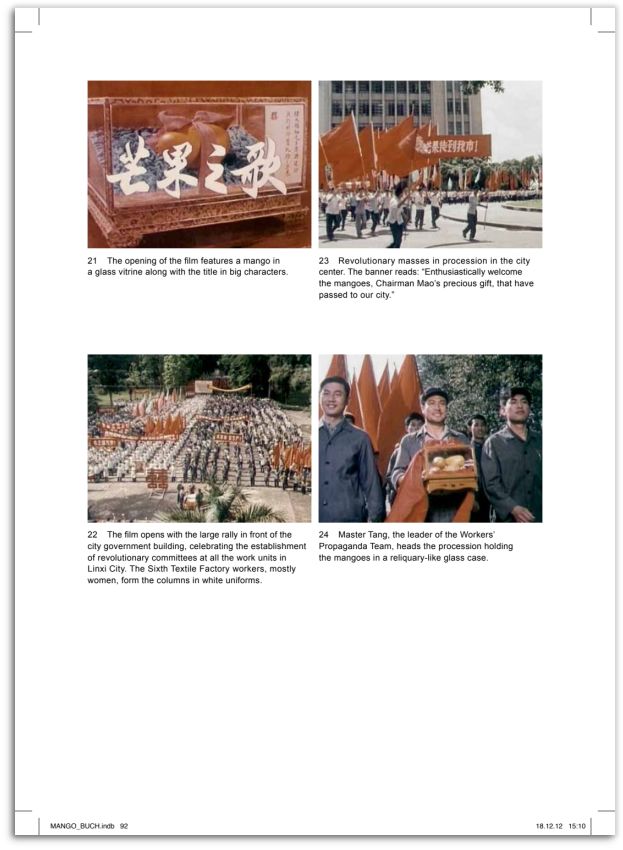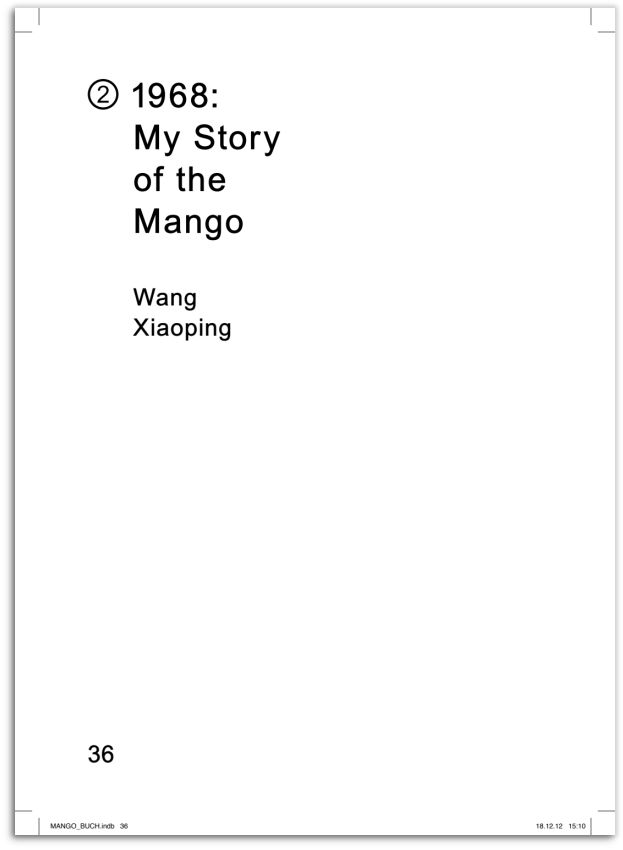Mao's Golden Mangoes and the Cultural Revolution
The extraordinary transition of a fruit into a near-divine symbol of the workers class’s power in China
GVA Gemeinsame Verlagsauslieferung Göttingen
GmbH & Co. KG
P.O. Box 2021
37010 Göttingen
Germany
+49 551 384 200 0
info@gva-verlage.de
In August 1968, the Pakistani foreign minister visited Beijing and presented Chairman Mao Zedong with a crate of mangoes as a diplomatic gesture. The next day, Mao sent the mangoes to the “Worker-Peasant Mao Zedong Thought Propaganda Teams,” who had been stationed at Qinghua University to suppress warring factions of the Red Guards ten days prior. The message of this gift was to dismiss the student-activist Red Guards, who had been leaders of the proletarian movement in China, and install in their stead workers as the permanent guardians of China’s education system. During the following weeks, the mangoes were distributed to several factories, where they were treated as though they were religious relics. The golden mango was thus a powerful emblem of the power and respect accorded to the proletariat under Mao’s rule.
Mao’s Golden Mangoes and the Cultural Revolution, published to coincide with an exhibition at the Museum Rietberg in Zürich, explores the golden mangoes’ reverberations throughout Chinese culture for years to come. The text includes a historical narrative of the golden mangoes’ rise to fame; first-person accounts of both students and factory workers; an examination of the National Day Parade in 1968, which used the symbol of the mangoes prominently; a critical essay on the 1976 film The Song of the Mango; and it compares the perception of the workers in China in the late 1960s and today.


